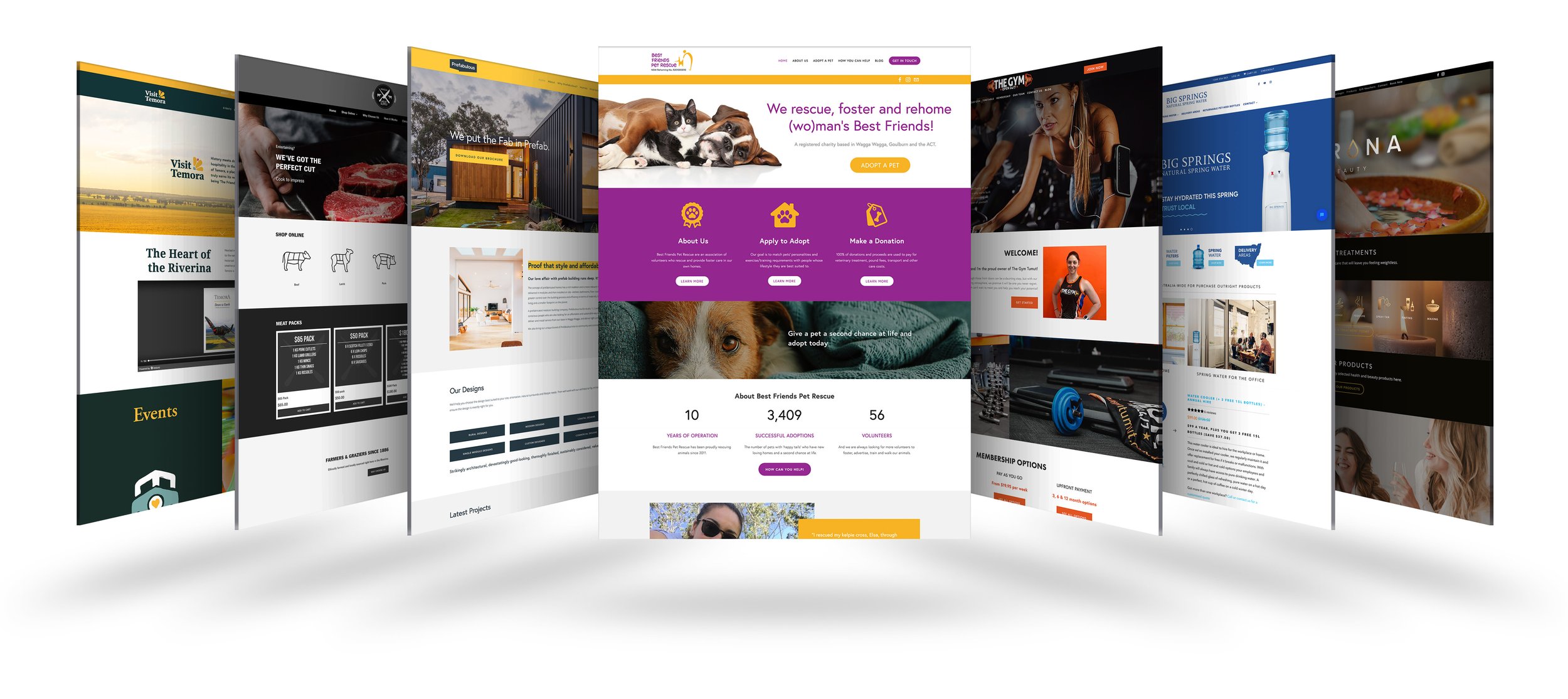Optimize Interaction: Proven Techniques for Superior Internet Site Layout
Comprehending exactly how effective navigating, visual hierarchy, and web content optimization merge to boost customer engagement is vital for any type of organization seeking to make a purposeful impact. As we explore numerous tried and tested methods that add to impressive site design, the interaction between these components discloses not just best techniques however likewise cutting-edge approaches that can elevate customer experience.
Relevance of User-Centric Design
User-centric layout is crucial in producing efficient web sites, as it focuses on the needs and preferences of the end user from the very beginning of the style procedure (website design). This method makes certain that the website is tailored to provide an ideal experience for individuals, helping with engagement and contentment. By comprehending individual behaviors, goals, and pain factors, designers can create interfaces that resonate with their target market and foster a sense of link
Executing user-centric layout involves considerable research study, including individual personas and journey mapping, which help in recognizing the certain requirements of various individual sections. This data-driven approach enables notified choices pertaining to capability, format, and material, inevitably resulting in the production of an extra instinctive and enticing internet experience.
Moreover, a user-centric strategy advertises ease of access and inclusivity, guaranteeing that internet sites satisfy diverse user abilities and preferences. This not just improves individual experience yet also broadens the audience reach. In a competitive electronic landscape, prioritizing user-centric layout is not merely advantageous; it is essential for driving engagement, minimizing bounce rates, and fostering individual loyalty. Effective web sites are those that reverberate with customers, making user-centric design an essential concept for successful web advancement.
Reliable Navigation Strategies
A well-structured navigation system is a keystone of reliable website style, building straight on the principles of user-centric style. Efficient navigation allows customers to discover information quickly and intuitively, improving their overall experience and encouraging longer check outs.
To achieve this, take into consideration implementing a clear hierarchy in your navigating food selection. Main classifications must be immediately visible, while subcategories can be exposed through dropdowns or expandable menus. This organization aids customers prepare for where they might discover appropriate material, decreasing disappointment.

Uniformity is important; use acquainted terms and style components throughout the website to stay clear of complication. Breadcrumb tracks can likewise be helpful, giving customers with contextual understanding of their area within the website and making it possible for very easy backtracking.
Finally, make sure that your navigating is mobile-friendly and receptive. As more customers gain access to websites via mobile phones, adapting your navigation for smaller sized screens is essential for maintaining usability and availability. By prioritizing these techniques, you can develop a smooth navigating experience that keeps customers engaged.
Visual Power Structure and Design
Developing a clear visual pecking order is crucial for guiding customers with a site's material properly. A well-structured layout not just improves individual experience yet additionally affects exactly how visitors regard and engage with info. By tactically employing dimension, spacing, color, and comparison, designers can create prime focus that accentuate one of the most important elements, such as headlines, phones call to activity, or images.
Integrating a grid system can further enhance visual pecking order by supplying a regular structure for web content placement. This company enables users to navigate the site without effort, making it easier to absorb details (website design). Furthermore, using whitespace is important; it produces breathing space around aspects, lowering cognitive overload and stressing crucial material

Content Optimization Strategies
While producing aesthetically appealing styles is necessary, the effectiveness of a web site eventually pivots on how well its material is enhanced for both search engines and user involvement. Content optimization includes a calculated approach that boosts presence and significance, ultimately driving web traffic and maintaining site visitors.
First, keyword research is fundamental. Recognizing pertinent keyword phrases that align with customer intent enables the integration of these terms naturally right into headings, text, and meta descriptions. This not only aids in ranking greater on online search engine yet likewise enhances the quality of material for individuals.

Additionally, maximizing for local SEO can improve involvement for region-specific audiences. Incorporating localized key phrases and producing content that addresses regional interests improves significance.
Lastly, frequently updating content guarantees that it stays valuable and fresh, appealing to both online search engine and returning individuals. By concentrating on these material optimization methods, organizations can create a compelling on-line visibility that fosters interaction and drives conversions.
Receptive and Mobile-First Approaches
Individual involvement and material presence are increasingly affected by the capacity of an internet site to adapt perfectly throughout numerous tools. With the rise of mobile surfing, using responsive layout and mobile-first techniques has ended up being essential for efficient web growth. Receptive style makes certain that a solitary internet site layout readjusts fluidly to different display sizes, from desktops to smartphones, therefore supplying a consistent user experience.
On the various other hand, a mobile-first technique prioritizes the mobile user experience throughout the style procedure. By creating for smaller screens at first, designers can focus on necessary functions and boost performance, guaranteeing that users are not overwhelmed by unnecessary web content. This approach also boosts loading times, which is essential for keeping site visitors.
Both strategies add to higher involvement rates, as individuals are more most likely to interact with a site that is easy to use and aesthetically enticing. Search engines favor mobile-optimized sites in rankings, thus improving presence. In recap, embracing mobile-first and responsive layout strategies is crucial for maximizing customer engagement and ensuring that content stays available and effective throughout all tools.
Conclusion
In final thought, the application of user-centric layout principles is vital for optimizing involvement in web site style. Efficient navigating techniques, a well-defined visual pecking order, and optimization of web content significantly enhance individual experience. Additionally, embracing responsive and mobile-first techniques makes certain access across various gadgets. Jointly, these methods not just assist in info access but likewise foster you could look here much deeper individual communication, eventually contributing to greater engagement prices and overall site success. Prioritizing these components is vital for efficient website design.
As we explore numerous tested methods that contribute to outstanding internet site style, the interaction between these aspects exposes not just best techniques however also ingenious methods that can boost customer experience.User-centric layout is essential in creating efficient web sites, as it focuses on the requirements and preferences of the end investigate this site individual from the actual beginning of the layout process. Efficient internet sites are those that resonate with customers, making user-centric layout a fundamental principle for successful web growth.
Responsive style ensures that a solitary website layout readjusts fluidly to various display dimensions, from desktops to smart devices, thus giving a consistent user experience.
In recap, embracing responsive and mobile-first style methods is important for maximizing customer engagement and guaranteeing that content continues to be easily accessible and efficient across all tools.